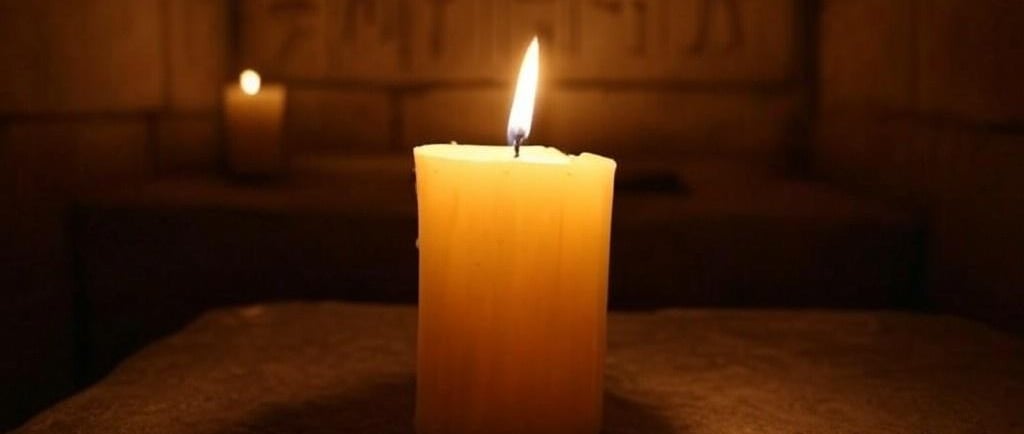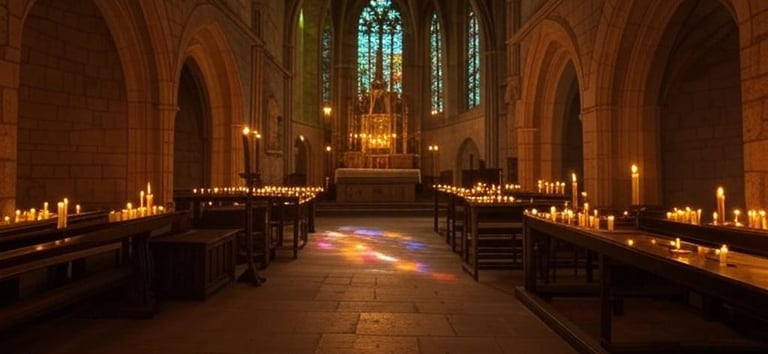The History of Beeswax Candles: From Ancient Times to Modern Day
Embark on an illuminating journey through time with our comprehensive exploration of beeswax candles. From the sacred rituals of ancient Egypt to today's eco-conscious living, discover the rich history, cultural significance, and sustainable revival of these timeless lights. Learn how beeswax candles have symbolized purity, luxury, and environmental consciousness across centuries, and why they remain a preferred choice in modern homes.
BEESWAX
Beeswax Pat
10/14/20253 min read


The History of Beeswax Candles: From Ancient Times to Modern Day
The history of beeswax candles spans millennia, showcasing their importance in various cultures, religions, and households. Valued for their purity, durability, and efficiency, beeswax candles have maintained their status as a premier light source. This article explores their journey from ancient Egyptian temples to today's eco-conscious homes, highlighting how these candles have not only illuminated physical spaces but also cultural and spiritual realms across history.
Ancient Beginnings: Beeswax Candles in Egypt, Greece, and Rome (c. 3000 BCE – 500 CE)
Egypt: Around 3000 BCE, beeswax was used in religious ceremonies and mummification, symbolizing purity. Although oil lamps were more common, beeswax candles held a special place in sacred contexts due to their association with the divine and the afterlife.
Greece and Rome: By 500 BCE, beeswax candles were used in Greek temples to signify purity and natural order. Romans, by 100 CE, refined candle-making by incorporating wicks, catering especially to the elite due to the candles' clean burn and pleasant aroma. These candles were not just functional; they also served as a status symbol in Roman society, often used during feasts and in public ceremonies.
Medieval Europe: Sacred Symbolism and Religious Use (c. 500 – 1500 CE)
During the Middle Ages, beeswax candles became synonymous with sanctity in the Christian Church. From the 500s, they were used in cathedrals, symbolizing divine light. By the 12th century, beeswax was mandated for altar candles, leading to the establishment of candlemaking guilds to supply churches and the nobility. These guilds were crucial, not only for providing light during religious services but also for upholding the symbolic purity of the sacrament.
The Renaissance and Early Modern Period: Trade and Innovation (c. 1400 – 1800 CE)
The Renaissance increased the demand for beeswax candles, driven by trade and exploration. By the 1600s, beeswax production had spread to North America, where it became a luxury in well-off homes due to its odorless burn compared to tallow. The period also saw an uptick in artistic representations of candles in paintings, emphasizing their elegance and their role in the burgeoning culture of enlightenment.
Innovations: New techniques in the Enlightenment era made beeswax candles more efficient, though still a luxury due to cost. Innovations included the development of molds and better quality control in wax production, which improved both the burn time and the aesthetic quality of candles.
The Industrial Revolution: The Decline of Beeswax Candles (c. 1800 – 1900)
The introduction of paraffin in the 1800s shifted the candle market due to its affordability. Beeswax candles, although still valued for their quality, became luxury items used mainly for special occasions or in religious settings. This shift was emblematic of broader changes in society, where efficiency and cost often trumped tradition and quality in everyday goods.
The Early 20th Century: Limited Use Amidst New Technology (c. 1900 – 1950)
With the advent of electric lighting, candle use dwindled, but beeswax candles retained their symbolic value in ceremonies and among the affluent. They were particularly cherished during times of power shortages, like during the World Wars, when they provided both light and a comforting link to tradition.
The Environmental Movement and Beeswax Revival (c. 1970 – 1990)
The environmental awareness of the late 20th century sparked a beeswax comeback. Studies highlighting paraffin's pollutants drove consumers towards beeswax for its cleaner burn. This period also saw a resurgence in interest in natural products, aligning with a broader cultural shift towards wellness and ecological responsibility.
Modern Day: Beeswax Candles in the 21st Century (2000 – Present)
Beeswax candles today are celebrated not only for light but for their air-purifying properties and support of sustainable beekeeping. They come in various natural scents, blending tradition with modern sustainability. Artisans have innovated with beeswax, creating candles that not only serve as light sources but also as pieces of art, often combining them with natural dyes and essential oils for enhanced sensory experiences.
By choosing beeswax candles, you embrace a piece of history while contributing to environmental conservation. Explore our beeswax candle collection (URL-to-your-shop) to bring this ancient light into your modern life.
Sources:
Smith, John. The History and Symbolism of Beeswax Candles. Ancient Light Publishing, 2018.
Martin, Sarah. "Beeswax Candles and Their Place in Medieval Christianity." Journal of Cultural Symbolism, vol. 52, no. 3, 2020, pp. 175-195.
United States Environmental Protection Agency. "Health Risks of Paraffin Candles." EPA.gov, 15 Jan. 2019, www.epa.gov/indoor-air-quality-iaq/health-risks-paraffin-candles.
Brown, Amanda. Eco-Friendly Candles: A Guide to Natural Wax Choices. Green Living Press, 2019.
Jones, Emily. "Negative Ions and Indoor Air Quality: The Benefits of Beeswax Candles." Health Today, 22 Oct. 2022, www.healthtoday.com/indoor-air-quality/benefits-beeswax-candles.
National Honey Board. "The Benefits and Sustainability of Beeswax Production." Honey.com, 8 Aug. 2022, www.honey.com/beeswax-benefits.


